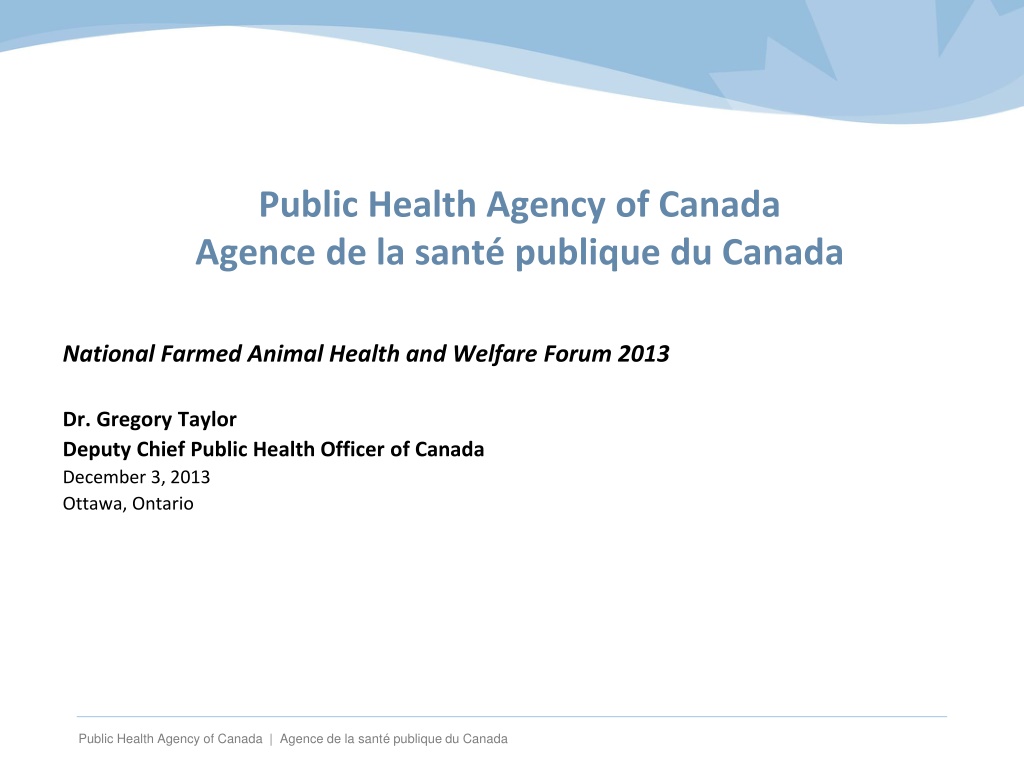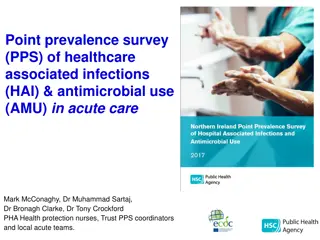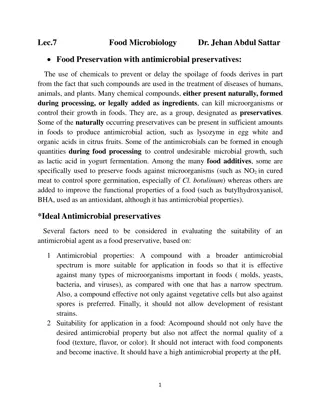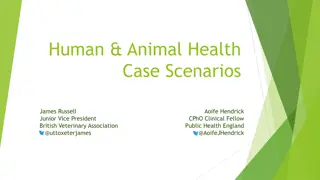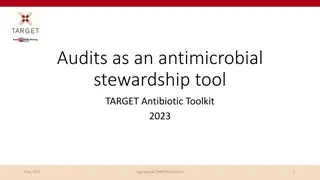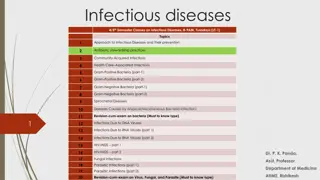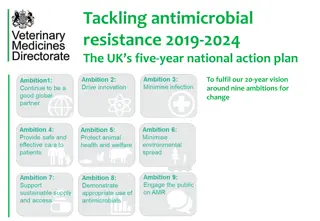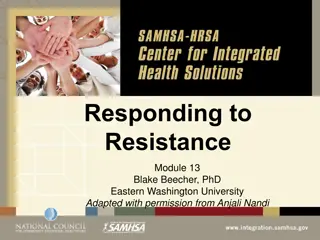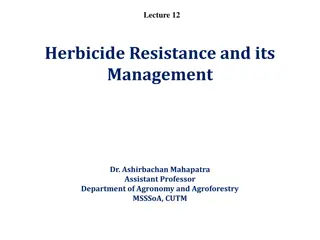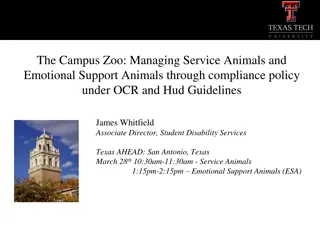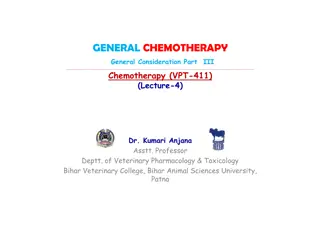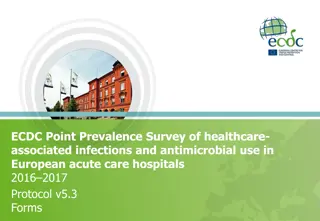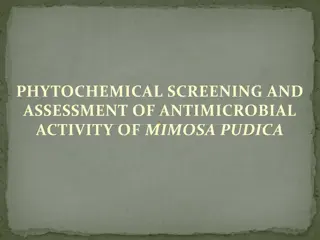Complexities of Antimicrobial Resistance in Farm Animals and Public Health
The epidemiology of antimicrobial resistance is multifaceted, involving various sectors such as aquaculture, soil, wildlife, human-animal interfaces, and more. The case study on ceftiofur resistance in chickens highlights the impact of antibiotic use on resistance levels in both animals and humans. This compilation sheds light on the intricate interplay between agriculture, animal health, and the spread of antimicrobial resistance, posing significant challenges to public health.
Download Presentation

Please find below an Image/Link to download the presentation.
The content on the website is provided AS IS for your information and personal use only. It may not be sold, licensed, or shared on other websites without obtaining consent from the author. Download presentation by click this link. If you encounter any issues during the download, it is possible that the publisher has removed the file from their server.
E N D
Presentation Transcript
Public Health Agency of Canada Agence de la sant publique du Canada National Farmed Animal Health and Welfare Forum 2013 Dr. Gregory Taylor Deputy Chief Public Health Officer of Canada December 3, 2013 Ottawa, Ontario Public Health Agency of Canada | Agence de la sant publique du Canada
Worldwide Distribution of Cases of NDM-1* Dec. 2010 (*New Delhi metallo-beta-lactamase 1 enzyme/ superbug )
The Epidemiology of Antimicrobial Resistance is Complex Fuel Ethanol AQUACULTURE Sea / Lakes Swimming Fuel Ethanol Producers Drinking Water Drinking water Rivers and Streams Distillers Grain By-Products Industrial & Household Antibacterial Chemicals SOIL Land Fill Farm Effluents and Manure Spreading Sewage WILDLIFE Dead stock Rendering Offal Vegetation, Seed Crops, Fruit HUMAN SWINE COMMUNITY - URBAN -RURAL SHEEP CATTLE HOSPITALIZED Commercial Abattoirs / Processing Plants Re-mix Handling Preparation Consumption FOOD ANIMALS Animal Feeds Meat VEAL CALVES EXTENDED POULTRY CARE TRAVELLERS OTHER FARMED LIVESTOCK FACILITIES COMPANION ANIMALS Direct Contact after Linton AH (1977), modified by Irwin RJ IMPORTS CIPARS 2012 INTEGRATED AMR RESULTS 2
Ceftiofur Resistance in Chicken E. coli and Human and Chicken S. Heidelberg (Qu bec) CIPARS 2003-2009, Rolling Average 80% Voluntary withdrawal of ceftiofur in ovo use Retail Chicken E. coli Retail Chicken S. Heidelberg Human S. Heidelberg 70% High level of use Prevalence of ceftiofur resistance 60% Zero use 50% Unknown use 40% Partial reinstitution of ceftiofur use 30% 20% 10% 0% 3 4 1 2 3 4 1 2 3 4 1 2 3 4 1 2 3 4 1 2 3 4 1 2 3 4 preliminary 2009 2003 2004 2005 2006 2007 2008 Qu bec Province, Year, Quarter Canadian Integrated Program for Antimicrobial Resistance Surveillance , PHAC 3
